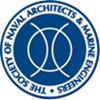船舶在波浪中操纵仿真的混合数值框架
IF 1
4区 工程技术
Q3 ENGINEERING, CIVIL
引用次数: 8
摘要
水面船舶的操纵特性对港口和公海的航行安全起着至关重要的作用,对船舶的整体作战能力至关重要。绝大多数船舶操纵分析都是在平静水域的假设下进行的,但船舶大多在波浪中运行。由于问题的复杂性以及进行物理实验和数值模拟的挑战,对波浪中机动的理解受到限制。在这项工作中,提出了一种新的快速运行方法,可以研究波浪中的机动。新制定的方法被归类为“混合方法”,其名称来源于用于预测作用在波浪中操纵的船舶上的总水动力的多种数值方法和力模型。本文提出的框架结合了计算流体动力学、线性时域边界元方法和螺旋桨力模型,用于有效计算总水动力。本文章由计算机程序翻译,如有差异,请以英文原文为准。
A Hybrid Numerical Framework for Simulation of Ships Maneuvering in Waves
The maneuvering characteristics of a surface ship play a critical role in the safety of navigation both in port and in an open seaway, and are vital to the overall operational ability of the ship. The vast majority of maneuvering analyses for ships have been performed under the assumption of calm water, yet ships mostly operate in waves. Understanding of maneuvering in waves is limited by the complexity of the problem and the challenges of performing physical experiments and numerical simulations. In this work, a new fast-running method that allows for the study of maneuvering in waves is formulated. The newly formulated approach is categorized as a “hybrid method,” taking its name from the multiple numerical methods and force models used to predict the total hydrodynamic force acting on the vessel maneuvering in waves. The framework presented here uses a combination of Computational Fluid Dynamics, a linear time-domain boundary element method, and a propeller-force model for efficient computation of the total hydrodynamic force.
求助全文
通过发布文献求助,成功后即可免费获取论文全文。
去求助
来源期刊

Journal of Ship Research
工程技术-工程:海洋
CiteScore
2.80
自引率
0.00%
发文量
12
审稿时长
6 months
期刊介绍:
Original and Timely technical papers addressing problems of shipyard techniques and production of merchant and naval ships appear in this quarterly publication. Since its inception, the Journal of Ship Production and Design (formerly the Journal of Ship Production) has been a forum for peer-reviewed, professionally edited papers from academic and industry sources. As such, it has influenced the worldwide development of ship production engineering as a fully qualified professional discipline. The expanded scope seeks papers in additional areas, specifically ship design, including design for production, plus other marine technology topics, such as ship operations, shipping economic, and safety. Each issue contains a well-rounded selection of technical papers relevant to marine professionals.
 求助内容:
求助内容: 应助结果提醒方式:
应助结果提醒方式:


